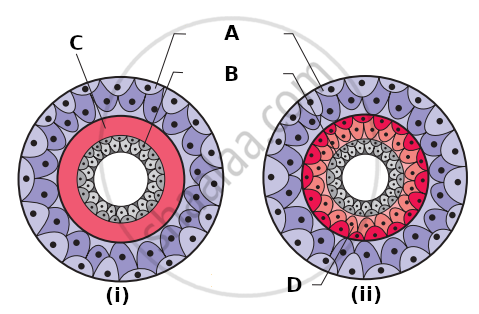Advertisements
Advertisements
प्रश्न
Draw a neat and labelled diagram.
Jellyfish
उत्तर

APPEARS IN
संबंधित प्रश्न
If you are given a specimen, what are the steps that you would follow to classify it?
Distinguish between intracellular and extracellular digestion.
What is the difference between direct and indirect development?
What are the reasons that you can think of for the arthropods to constitute the largest group of the animal kingdom?
Complete the following chart.
| Body cavity | Germ Layer | Phylum |
| Absent | ______ | Porifera |
| Absent | Triploblastic | ______ |
| Pseudocoelom | ______ | Aschelminthes |
| Present | ______ | Arthropoda |
Which of the following have the highest number of species in nature?
Lateral line sense organs occur in ______.
Match the following columns and select the correct option.
| Column – I | Column – II | ||
| (p) | Pila | (i) | Devil fish |
| (q) | Dentalium | (ii) | Chiton |
| (r) | Chaetopleura | (iii) | Apple snail |
| (s) | Octopus | (iv) | Tusk shell |
Identify the structure that the archenteron becomes in a developing animal.
Choose the term that does not belong in the following group and explain why it does not belong?
Notochord, cephalisation, dorsal nerve cord and radial symmetry.
Which organism is called Friends of farmers? Why?
In which of the following the notochord is present only in embryonic stages?
Examine the figures of diploblastic (i) and triploblastic (ii) organization in animals given below and identify the labelled parts A to D.

Match the following list of animals with their level of organisation.
| Division of Labour | Animal |
| Column I | Column II |
| A. Organ level | i. Pheretima |
| B. Cellular aggregate level | ii. Fasciola |
| C. Tissue level | ii. Spongilla |
| D. Organ system level | iv. Obelia |
Choose the correct match showing division of labour with animal example.
Provide appropriate technical term in the space provided.
Blood-filled cavity in arthropods ______.
Complete the paragraph using proper words:
(Asymmetrical, Paramecium, Equal, imaginary, central, insects, rats, bird, three, unequal)
If body of any animal is cut through ______ axis of body, it may or may not produce two equal halves. Depending upon this property, there are different types of animal bodies. In the case of ______ body, there is no any such imaginary axis of the body through which we can get two equal halves. For example Amoeba, ______ some sponges. In radial symmetry type of body, if imaginary cut passes through central axis but any plane of body, it gives two ______ halves. For example Starfish. In case of this animal, there are five different planes passing through ______ axis of body through which we can get two equal halves. In Bilateral symmetry type of body, there is only one such imaginary axis of body through which we can get two equal halves. For example: ______ fishes, frog, birds, human, etc.
Animal with bilateral symmetry in ______.
